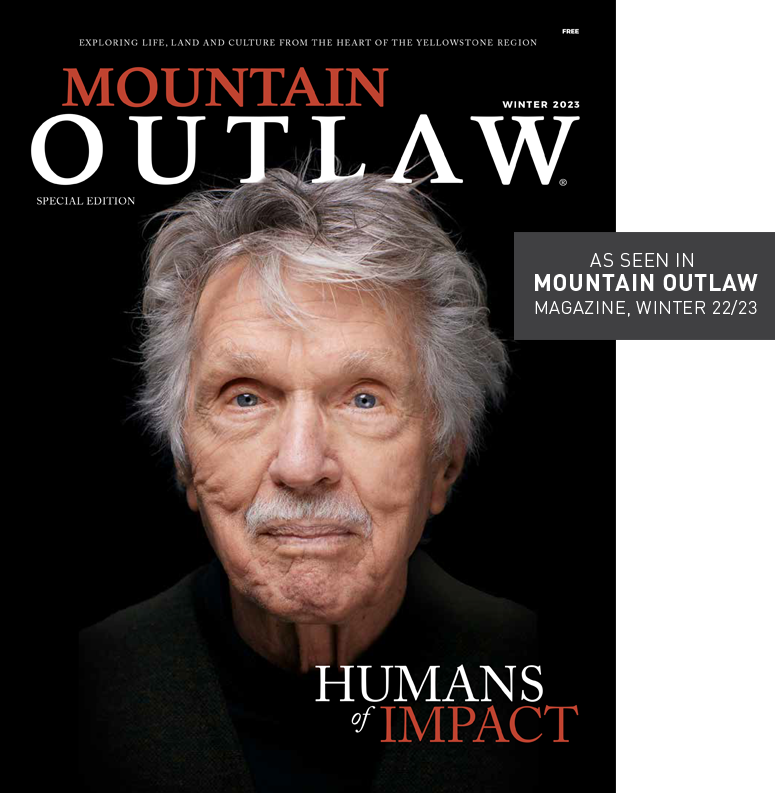Connecting Bozeman’s Conservation Community With the Arctic
BY MIRA BRODY
PHOTOS BY DANIEL J. COX
Daniel J. Cox has traveled to Churchill, Manitoba, each year since 1989 to document polar bears in Canada’s Hudson Bay—one of the lowest latitudinal locations on Earth they can be seen in their natural habitat. For the past 30-plus years, the natural history and wildlife photojournalist has been providing these images to the nonprofit Polar Bears International, located 2,000 miles from Manitoba in Bozeman, Montana.
Originally a modest, volunteer-driven organization called Polar Bears Alive founded in 1994, PBI graduated into what is now the largest climate change resource and polar bear advocacy group in the world. Cox became involved when he met founder Dan Guravich and convinced the group to settle in the quiet southwest Montana ski town where it could draw on the talents of professionals committed to wildlife conservation while coordinating field projects around the world. Today, the photographer and conservation group share an office on the town’s northeast side.
“Polar bears are incredible creatures,” said Steven Amstrup, PBI’s chief scientist and one of the world’s top polar bear experts. “And now they have taken on so much more importance because they are the symbol of the dangers of the constantly warming climate. We have this incredible, charismatic species that I think everyone has an appreciation for that is also sending us a really important message.”
And what’s that message? We all share a single planet that is changing dramatically. And while many of us live far from polar bears and will likely never see one, what we do dramatically influences their habitat.
Amstrup is an adjunct professor at the University of Wyoming in Laramie and currently resides in Kettle Falls, Washington. He says his love for bears began when he was 5 years old, a passion that evolved into his studies and later, his profession. His University of Idaho master’s thesis focused on black bears. Shortly after, the U.S. Fish and Wildlife Service asked him to lead polar bear research in the Alaskan Beaufort Sea for the Polar Bear Research Project from 1980 until 2010. He began volunteering with PBI in 2001 and his storied relationship with these Arctic bears has spanned decades, continents and groundbreaking research, including a study published in the peer-reviewed journal Nature Climate Change on projected ice loss and polar bear population decline.
The International Union for Conservation of Nature’s Polar Bear Specialist Group lists the polar bear as a “vulnerable” species, meaning they are threatened by extinction unless circumstances drastically change. The union estimates that about 26,000 of these ivory bruins exist worldwide. Sea ice loss coupled with increased commercial activities, conflicts with people, pollution and disease are greatly threatening the bears and their habitat. In the time since Amstrup and Cox have studied these creatures, their population in Canada’s Northern Hudson Bay alone has dropped by 30 percent.
Both men have observed these habitat changes firsthand.
On Cox’s first trip to Churchill in November of 1989, he watched bears gather on an ice shelf in Hudson Bay to hunt seals. Today, the ice shelf isn’t large enough for bears to hunt until early December, depriving the bears of precious weeks. Part of Cox’s work with PBI includes a partnership called the Arctic Documentary Project, which he launched in 2005 to channel what he calls his important work: photographs that fuel a movement.
“When I first started in this business in 1981—and before that as just a kid who liked to take pictures—I had this hope that these pictures would show people that we need to be considerate of these animals and that we need to protect them,” Cox said.
Amstrup recalls standing on the north coast of Alaska in 1981, staring at the Arctic Ocean and seeing sea ice even in the summer months. Today, that ice is out of sight, beyond the curvature of the Earth.
“Every species has a need for various ecosystem services: the ability to catch food, get water and a habitat that is undisturbed,” Amstrup said. “If you think about the habitat that polar bears live in, it’s a very different one than any other place that animals live … but their habitat is critical to their existence.”
Amstrup explained that while the impacts on polar bears may be more obvious because their habitat visibly melts, every species–including those we love here in the Greater Yellowstone Ecosystem, are feeling the same peril. We all live in one shared atmosphere.
There’s something about polar bears that draws people’s attention. Despite their apex stature, they appear fuzzy and cuddly, pure and white, and thrive in a cold, harsh landscape unreachable to most of humanity. It’s this collective love for these bears and for conservation work, Cox and Amstrup agree, that carries hope for PBI’s efforts playing out thousands of miles south of where the bears live.
“The important thing is that saving polar bears is about teamwork,” Amstrup said. “I think that PBI has been really good at getting the word out that this is what we need to do. Conservation is not just about game wardens and [U.S.] Fish and Wildlife employees … It’s really about how the rest of us live and recognizing our responsibility for caring for all life on Earth.”
Mira Brody is content marketing strategist at Outlaw Partners and producer of Mountain Outlaw magazine.

